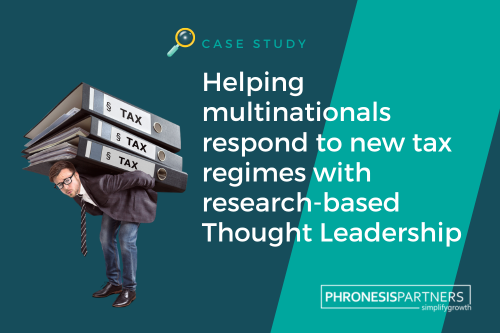An industry-leading company optimized sales performance by using Phronesis’ customer segmentation research to inform and revamp their customer segmentation strategy.
The cybersecurity company had distinct client segments, but its marketing messaging adopted a broad focus instead of tailoring content to individual audiences. This led to a go-to-market strategy that was inefficient and underperforming, and lower average contract values (ACVs) and client retention rates.
Client Objective
The company sought to gain an in-depth understanding of its existing and potential customers by reviewing its current client segmentation, and redefining its ideal customer profiles (ICPs). From this, the cybersecurity company wanted to create tailored messaging for each segment, industry, and customer persona. This involved assessing:
- Businesses’ current IT infrastructures and cybersecurity needs
- Unmet needs and pain points related to enterprise risk and security
- Purchase triggers and decision drivers for cybersecurity solutions
- Characteristics of ideal customers, including firmographic details, technical requirements, and investment priorities
- Overlapping attributes among various customer segments
Approach
Phronesis leveraged a three-stage approach to gathering comprehensive insights into customer segmentation:
Stakeholder discussions
These were designed and executed by Phronesis to build an understanding of the company’s current state of segmentation, and identify the factors contributing to its inefficient marketing, poor sales conversion, and lower customer retention rates.
Qualitative research
Phronesis engaged in in-depth discussions with decision-makers and influencers within cybersecurity platforms to understand key customer perspectives, based on ideal customer personas:
- How do customers discuss cybersecurity platforms and solutions?
- What motivates customers to adopt a cybersecurity solution?
- How do customers assess cybersecurity solutions and platforms?
- How do customers define the business risks they seek to address?
- What are customers’ current states of preparedness in implementing cybersecurity solutions?
- What is the current spend on cybersecurity, and is this expected to increase or decrease in the near future?
- What are customers’ unmet needs and future expectations for cybersecurity solutions?
Quantitative research
Phronesis conducted a large-scale survey to validate the Qualitative Research hypotheses, define data-driven customer personas, and answer critical questions about customer preferences:
- What messaging resonates with customers?
- What are customers’ current needs and future expectations?
- How do customers categorize and address risk?
- What are customers’ top product priorities?
- Which are the most attractive sales target segments?
- What are the key characteristics of these segments?
- Are there any overlapping attributes among these segments?
Outcome
Phronesis analyzed the data collected from the three research phases to redefine the company’s ideal customer segments and their characteristics, including:
- Segment descriptions
- Current security needs and preferences
- Cybersecurity usage, challenges, and priorities
- Decision-making drivers
- Vendor identification, and engagement cycle and expenditure priorities
- Potential messaging for each customer segment
Impact
The company used the customer personas to optimize its resource allocation in sales and marketing, and to refine targeting strategies. This resulted in a gradual but substantial increase in the volume of annual contracts won. This informed approach also improved customer engagement and contributed to higher conversion rates.


